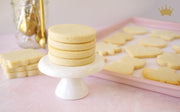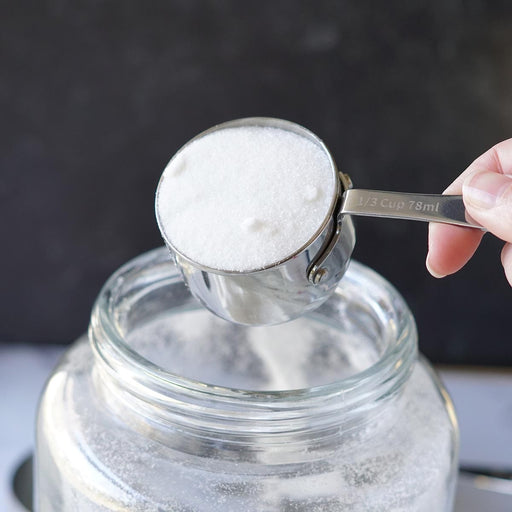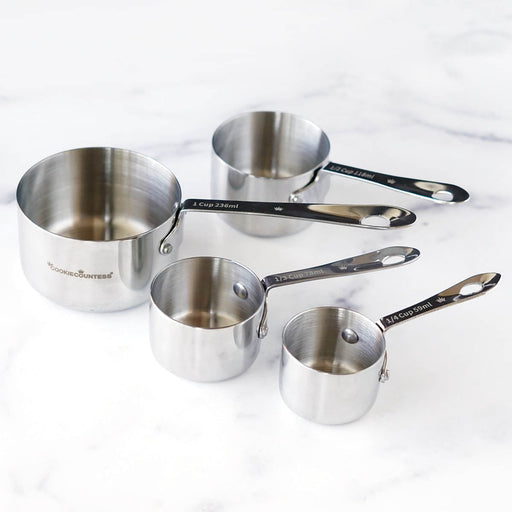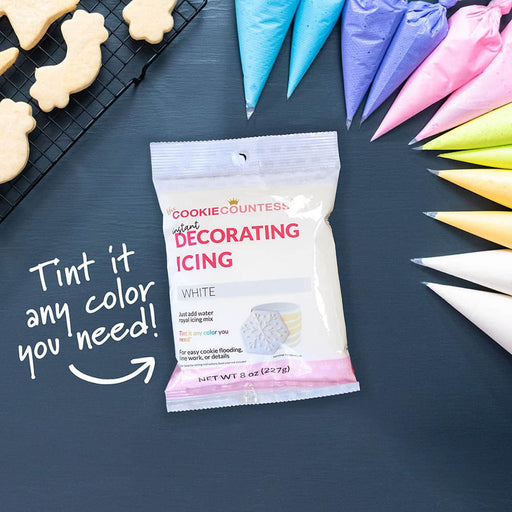
Black Airbrush Color and Edible Marker: Why Aren't They Coming Out Black?
Have you ever used a black edible marker, only to come back a couple of days later and see that your nice black lines look like they have turned green or pink or some other definitively not-black color? Or maybe you are using black airbrush color, and you notice that your black and white checkerboard looks more like a green and white checkerboard? Well, you’re not going crazy, and you don’t need to schedule a trip to the eye doctor (I mean, maybe you do, but probably not related to this particular issue). Let’s talk about black dyes.
💡 Did you know
Black markers, gels, and airbrush colors are all composed of a lot of different pigments to create that nice true black. But there are a couple of factors that can cause your black to either not look black right off the bat, or to change over time.

Troubleshooting Black Dyes
Airbrush Color
If you spray a light layer of black airbrush color onto your white-flooded cookie, you’ll likely note that a) it doesn’t go on deeply black immediately (hello, light layers), and b) it has a greenish tinge as it hits the cookie. This is because black airbrush color often has a green base, with other pigments added in that make the concentrated color truly black. When you lay down a light spray, the color isn’t concentrated anymore, and that green base becomes visible. To achieve a true black when airbrushing, your best method is to apply several light, even layers of color, allowing them to dry for a few moments before adding the next. As you add layers, they will build color on top of each other until you reach your desired black.
If your instinct is telling you to just skip the layering and spray a heavy layer of that concentrated black liquid all over your cookie—don’t do it! Pulling your trigger all the way back is a recipe for disaster, as too much wet color will hit your cookie all at once, causing it to pool or streak weirdly, and leaving a mottled, uneven result. You may even find that it won’t dry properly, if at all. Say it with me: light layers are your friend!
- Black Dyes are made up of multiple different pigments that combine to make black.
- Light Layers are your best friend when airbrushing. To achieve any dark color, including black, make multiple light, even layers.
- Whatever you do-- don't be tempted to open up your airbrush gun full blast. Oversaturating the top of your cookie with wet airbrush color can lead to uneven results and drying issues.

Edible Marker
Now, edible markers are a little bit different, as color variations on your icing will usually occur not during application, but in the coming hours or days. Most commonly, cookiers will draw on their fully-dried cookies with marker, allow the ink to dry (which really doesn’t take that long), and then go ahead and bag up the finished cookies. In the next day or days, you may see that your black marker lines have faded to a green, or that the color has split into greens and pinks and possibly bled outwards from the drawn line. Super frustrating, for sure.
The problem in this case is typically moisture. For a practical example, think of a time when you may have written on a piece of paper in black ink (gel or felt-tip pens, in particular—not ballpoint). If you accidentally set a cup covered in condensation down on that paper, the water would cause the pigments in the writing to bleed outwards, often resulting in a pink and green halo showing up around the marker lines. Now, this is an extreme example where actual water is introduced, but the concept is the same.
Somewhere in your process, the ink from the marker is coming into contact with moisture. Very often, it could be moisture in the icing itself, but it could also be from ambient humidity. Our New England summers can be unbearably humid, and that excessive moisture in the air can play havoc with royal icing in general. What typically takes 8 hours to dry can take 24 hours instead. Residual moisture in your icing can cause edible marker lines to bleed out or affect the dried color, but humidity in the air can do the same thing.
If you do live in an area that loves to use the expression “it’s not the heat, it’s the humidity,” then you have a couple of things you can do to try to be proactive. One, use a dehumidifier in your home or decorating area. Ideally, this should pull that excessive moisture from the air so that it doesn’t affect your decorating process. Make sure to use one that is suitable for your space, however. If you are decorating in a large space, a small portable unit is probably going to struggle to do the job.
One other possible factor with black marker is that it could be affected by an ingredient in your icing that could alter the color. The most common culprit of this is lemon, so if you use that flavor in your icing and are seeing color changes in your marker lines, that could be why.
Lastly, make sure to dust your marker lines with some corn starch right before bagging to absorb any moisture that tries to ruin your results (pro tip: you can do this with airbrushed cookies, too).
DO use a dehumidifier if the humidity in your decorating area is high.
DO use a dehydrator to remove excess moisture from your cookies and speed the drying process.
DO dust lightly with cornstarch before bagging.
DO NOT use your oven to dry cookies if there is any chance at all that someone (including yourself) might accidentally turn the oven on and ruin all your hard work.
Black can be a tough color to work with in general, as any cookier knows. Making black royal icing tends to take a LOT of gel color if you’re not starting with a darker base already. And how many of us discourage black-based cookies for events like weddings, knowing that the guests will be smiling for photographs with green (note: not black) teeth? But knowing how to build color to achieve that true black (as well as how to keep it that way) are key tools in the cookier arsenal of skills!
Recommended for You:
Piping Bag Tip Tube Covers - Set of 4
AtecoDon't let your icing bags leak or dry out! Use these covers on bags with Ateco couplers and standard tips on them. Reuse them again and again. Se...
View full detailsBlack Fine Tip Food Marker
The Cookie CountessA black edible-ink pen is essential for your decorating kit. Use these high quality markers for: Marking up baked cookies for planning designs Wr...
View full detailsStainless Steel Measuring Cups 4 Piece Set
The Cookie CountessIncredibly high quality, with no plastic parts. Whether baking or cooking you'll reach for these essentials again and again! THESE ARE THE LAST SET...
View full detailsInstant Royal Icing Mix - White Base
The Cookie CountessJust add water for white, stiff icing! Perfect for stenciling, dots and eyes, writing, or thin it for flooding. You can tint it any color you need...
View full detailsCookie Order Form 5 x 7, 50 sheets
The Cookie CountessThese cute sheets will help you plan your cookie orders. The back has an area for sketching and pricing planning. Size: 5" x 7" 50 Sheet Pad Doub...
View full details-

Cookier Takeaways
Read nowNine years ago this Halloween, I made my very first ever decorated sugar cookies. I had seen a video tutorial on Facebook, and after falling down a rabbit hole watching flooding video after flooding video, I thought to myself, “I...
-

Color Schemes
Read nowOne of the biggest considerations when designing a cookie set (aside from the shapes themselves) is the color scheme. And I don’t know about you, but very rarely do I find myself using bottled color as-is without mixing and tweaking...
-

Precision Rolling Pins 101
Read nowDon’t you love it when you bite into a cookie that is thick and underbaked on one end, but thin and overbaked on the other? You don’t? Yeah, me neither. If you use a standard rolling pin to make rolled-out...

















Leave a comment